Table of Contents
You want the most out of your investments. That’s not going to happen passively. It takes proactive action and the know-how to handle your relationship with your SaaS vendors. That’s why today we’re taking a look into the benefits, best practices, and the application of effective vendor management relationships.
What Is Vendor Relationship Management?
At its core, vendor relationship management is about maximizing investment through optimization by working with your vendor. When it comes to SaaS, you might also know it as supplier relationship management. In the process, you’re able to reduce costs and mitigate risks. All of which has become essential in a world dominated by cloud-based tools.
However, this all hinges on maintaining the relationship with your SaaS vendor. Yes, that sounds obvious. “Relationship” is in the name. However, it still goes woefully overlooked. That’s why it’s important to remember that vendor relationship management means recognizing that your SaaS vendor isn’t just your supplier. They’re your partner in your continued success as an organization.
Why Strong Vendor Relationship Management Matters
There are numerous benefits to building a strong relationship with your vendor.
Mutually beneficial partnership. As we mentioned before, vendor relationship management includes building a partnership with your supplier. That means strengthening your ties with your vendor, likewise recognizing their needs, and ultimately building a working relationship that benefits both parties. More than any one-click agreement could provide.
Lower SaaS costs. The average organization spends $49M a year on SaaS. Strong vendor relationship management likewise results in savings in both avoided costs and actual savings.
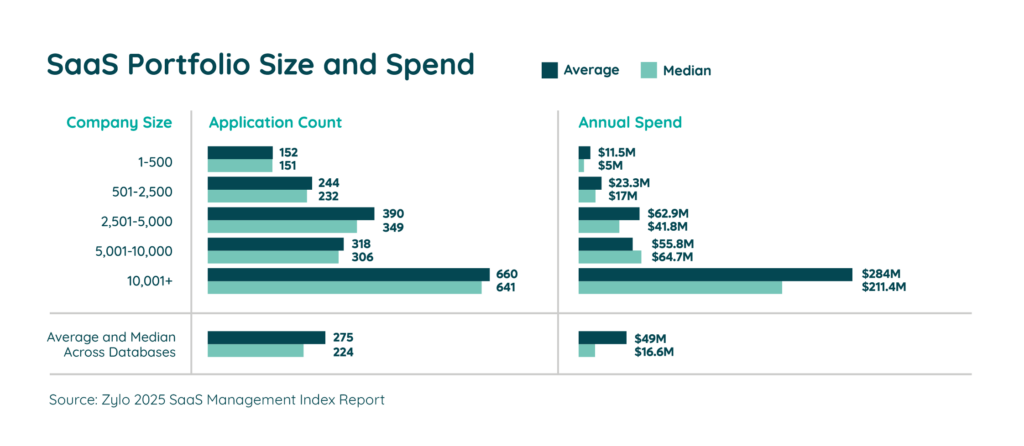
Reduce waste. Many organizations are plagued with overspending, redundant software, and unused licenses. After identifying this waste, you can use that knowledge to negotiate better prices for reduced seats or consolidate multiple agreements into a single enterprise deal that benefits both parties.
Better contract management. The average organization has hundreds of SaaS applications in its environment at any given time. Each has its own agreement from a different vendor. Effective management will help you keep these contracts from slipping through the cracks and protect you from unseen costs, gaps in service, and more.
Reduced security and compliance risks. An important part of your relationship with a vendor is clearly outlining and understanding how data is handled. Strong SaaS vendor management will take note of this at the very start when you sign an agreement with a new vendor.
Improved satisfaction (for users and vendors). Everyone likes a good deal. That’s true for the supplier and the end user. Vendors are invested in you as a customer being able to make the most of the tools they provide. As such, they’ll be happy to work with you to ensure this intended value reaches your employees. Employees in turn will be happier to receive the full value the tool provides them in their work.
Proactive renewal management. Zylo data shows that the average organization experiences 247 renewals annually, or one every business day. Needless to say, it’s easy to be overwhelmed if you’re not prepared. Supplier relationship management involves tracking these renewals, preparing for them, and ensuring that the application is renewed with the organization’s current needs in mind.
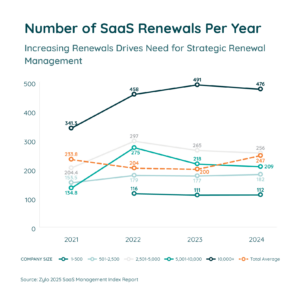
Meaningful results toward key business objectives. Saving on your SaaS means you have spend to allocate elsewhere and continue driving value from other initiatives throughout your organization.
Challenges Preventing Effective Vendor Relationship Management
Vendor management is more than saying, “Okay, we’re going to take a more proactive approach to our contracts.” There are challenges involved that you must address before you can get the most out of vendor management. Let’s take a look at those now.
Lack of Visibility
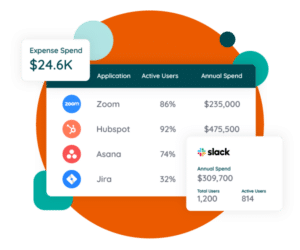 You can’t act on an opportunity if you don’t know it exists. You can’t find a solution for a problem you can’t see. That’s why the lack of visibility is the biggest hurdle to SaaS management as a whole, let alone vendor relationship management. You need a comprehensive view of all your applications as well as their deeper utilization metrics.
You can’t act on an opportunity if you don’t know it exists. You can’t find a solution for a problem you can’t see. That’s why the lack of visibility is the biggest hurdle to SaaS management as a whole, let alone vendor relationship management. You need a comprehensive view of all your applications as well as their deeper utilization metrics.
When you can see all of your SaaS and its data, you’re able to prepare and make informed decisions when it comes time for renewal.
Reactive Vendor Renewals
Speaking of renewals, are you ready for the next one? Many organizations struggle to recognize their approaching renewals until it’s too late. And without that prep work, it’s unlikely you’ll have any meaningful conversations with your vendor beyond the decision to renew or not. Compound that with the lack of visibility, you’re not bringing meaningful data to the conversation either.
If you’re only reacting to your renewals, you’re certainly not managing them in a way that matters.
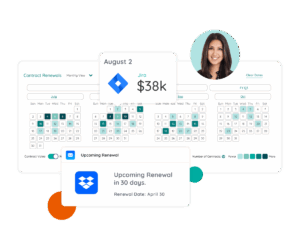
Seeing the Relationship as Transactional vs Partnership Driven
This hurdle goes both ways. Your vendor may not be invested in your success, or you’re not taking the right initiative. It can depend on the tool. Regardless of the case, this is a vendor relationship where one or both parties aren’t treating it as a partnership. This perspective is essential for identifying opportunities to forge agreements that recognize the needs of both sides.
Best Practices for Vendor Relationship Management
Now that we’ve covered the benefits and challenges, let’s take a look at the best practices for building an effective vendor relationship management approach.
Hire a SaaS Manager
It’s no secret that SaaS management can be tough if you don’t have the right skills at your disposal. When you hire a SaaS manager, you invest in a specialist to oversee your SaaS vendors and tools, ensuring your tech stack stays efficient and compliant. They act as a dedicated resource to manage your contracts and partnerships, and help you stay ahead of renewals. What’s more, they are your stakeholder go-between for everyone involved in SaaS decisions – legal, procurement, finance, and IT.
Focus on Building Relationships
There’s a reason that when we discuss SaaS, we refer to them as cloud-based solutions. Because that’s what they are, solutions to business challenges. And vendors are well aware of this. They’re passionate about providing you with the tools to help you solve problems, and you’re missing out if you’re not partnering with them.
In fact, many SaaS companies are more than willing to offer discounts to close a deal. The better your relationship with a vendor, the more likely they’ll help you out with multi-year discounting, bulk pricing, or even grandfather you into a deal with better pricing and feature sets.
Developing a strong relationship with your vendor will also help them understand your business and its strategic objectives. With this information in mind, they can better serve you and help you find opportunities for improvement to make the most out of your investment.
Use a SaaS Management Platform to Leverage Data
It’s one thing to come into a negotiation with a vendor saying that you’re looking for better rates or expanded features. It’s another thing entirely to come to that negotiation armed with the data to back it up. A SaaS management platform can get you that data — and fast.
The average organization only utilizes 47% of its provisioned licenses. With the right tools, you can bring that remaining 40% to the surface and decide how to handle it when it’s time for renewal.
For example, benchmarking data allows you to compare prices to similar organizations. Compound this with the power a SaaS management platform gives you to see your adoption, utilization, and sentiment. Then you’ll be able to combine that data and put it on the table when negotiating better prices with SaaS vendors.
That’s not even to mention the power of seeing all this information in a single easy-to-use dashboard.

How Zylo Enables Effective Vendor Relationship Management
When you’re working to improve your supplier relationship management, it helps to have the right tools to make it happen. Zylo is that tool. From visibility to optimization to renewal management, we’re here to help.
Start With Visibility
In terms of visibility, you can find every single application hiding in your SaaS portfolio. What’s more, you get meaningful data metrics behind those apps. That means you’ll find those big-budget items and see exactly what you need to maximize ROI when you negotiate with your Vendor. Zylo’s Discovery Engine offers this and more with 100% discoverability and a comprehensive view of your tech stack.
How the Zylo Discovery Engine Powers the Most Comprehensive SaaS Management Platform
Learn MoreFind Easy Savings
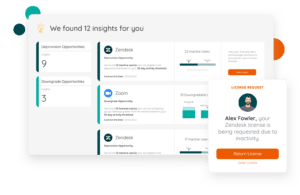 What’s more, you’ll surface optimization opportunities. These include reducing costly waste with easy personalized, prioritized, and actionable recommendations for rightsizing and cost savings – all in a single view with Zylo Insights.
What’s more, you’ll surface optimization opportunities. These include reducing costly waste with easy personalized, prioritized, and actionable recommendations for rightsizing and cost savings – all in a single view with Zylo Insights.
License usage analysis indicates immediate action for high-impact opportunities for license optimization. Then, portfolio insights helps you realize value from your SaaS investments faster. All of this means you know exactly what you need before you speak to your vendor.
Always Be Prepared for Renewals
Preparing for a renewal can be an arduous task. As we mentioned before, the average company experiences a renewal every single day. How can you be expected to prepare months in advance when there are problems to address tomorrow?
Well, there’s good news. Zylo can help you stay ahead of renewals, and months ahead of time with alerts and the handy App Overview. All of which puts the data you need at your fingertips.
That means no more surprise renewals and no more coming to a vendor unprepared.
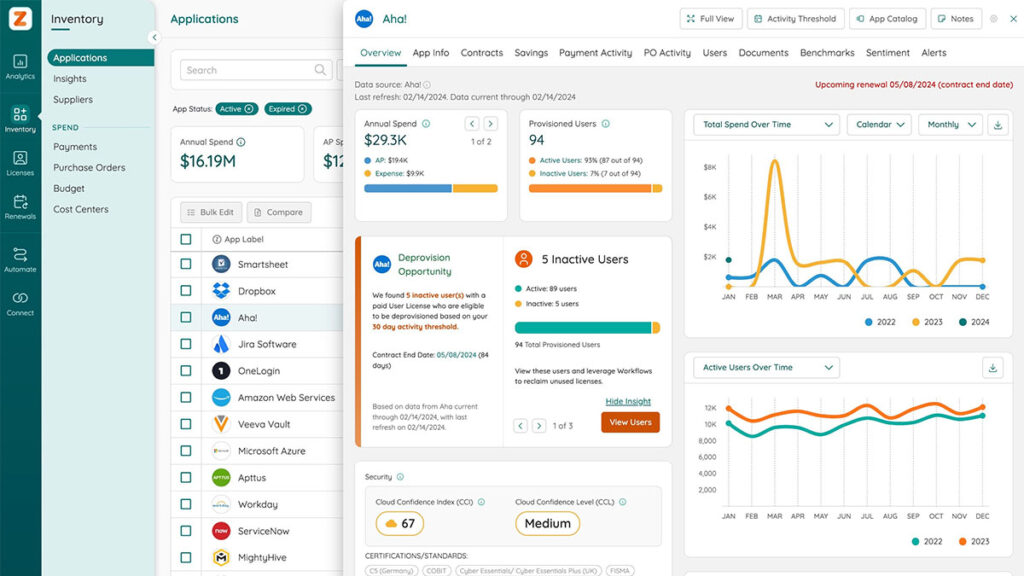
Learn Everything You Need to Know About Vendor Management
There’s a lot that goes into vendor management from tracking your applications and their metrics to negotiating with your vendors. But to really drive value, it’s key to maintain healthy relationships for cost savings, improved partnerships, and better contract management.
Check out our complete guide to SaaS vendor management if you’re looking for a deeper dive into understanding the ins and outs of how you see these benefits in your own organization.

